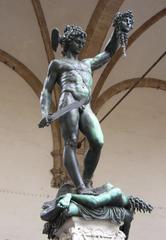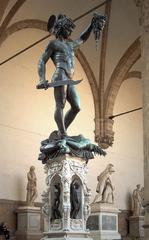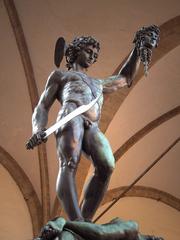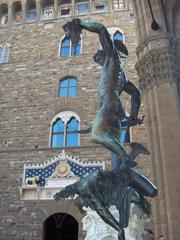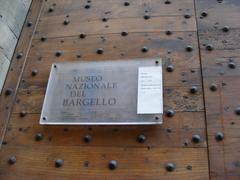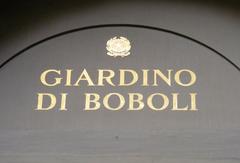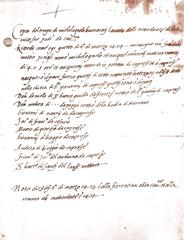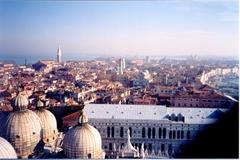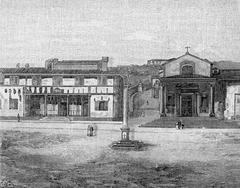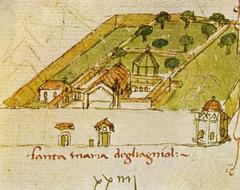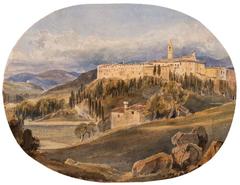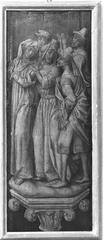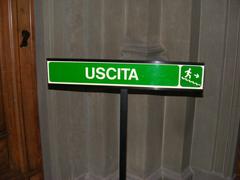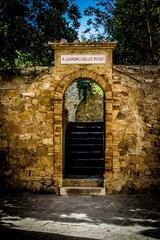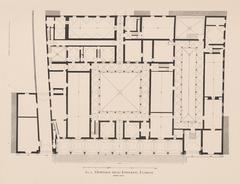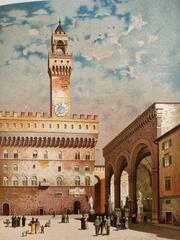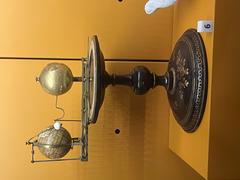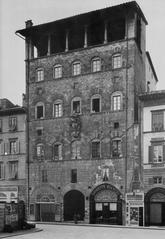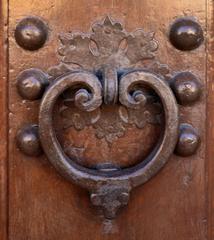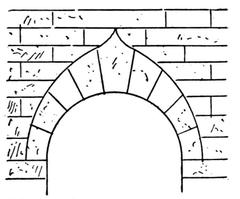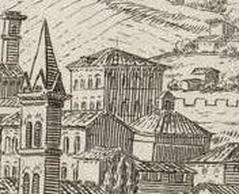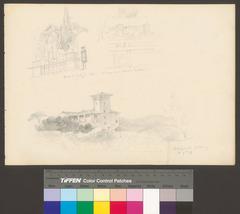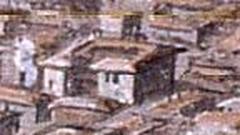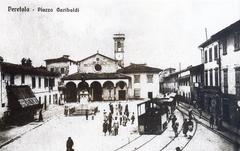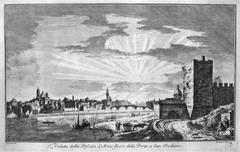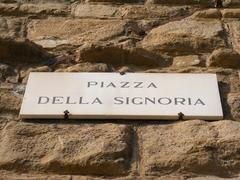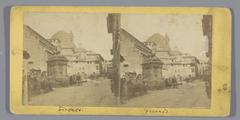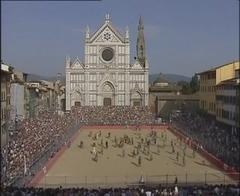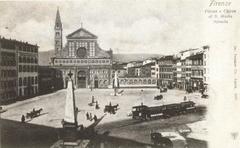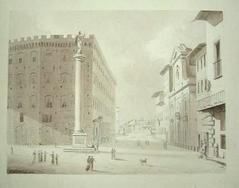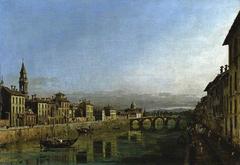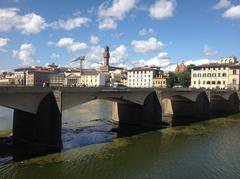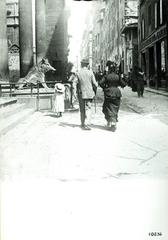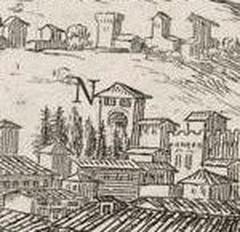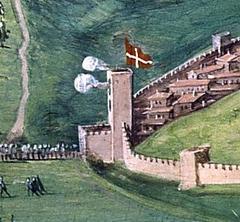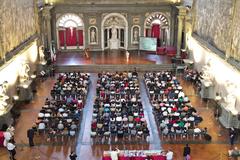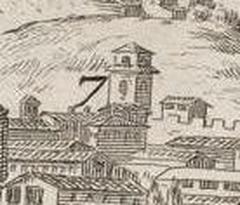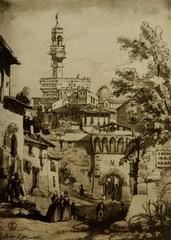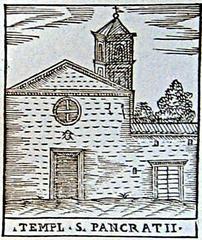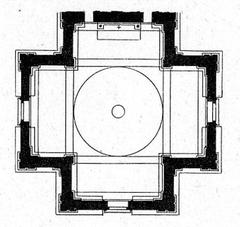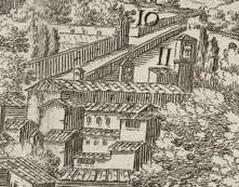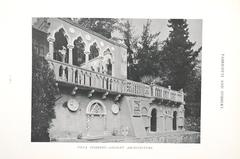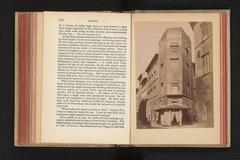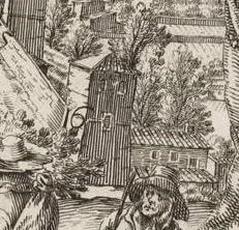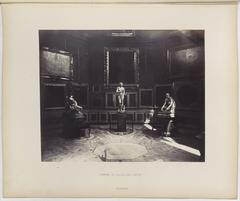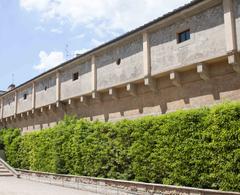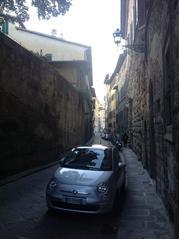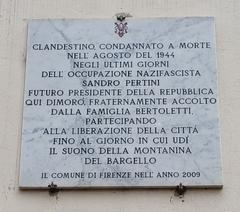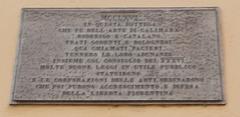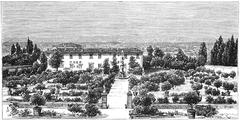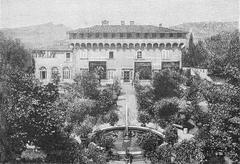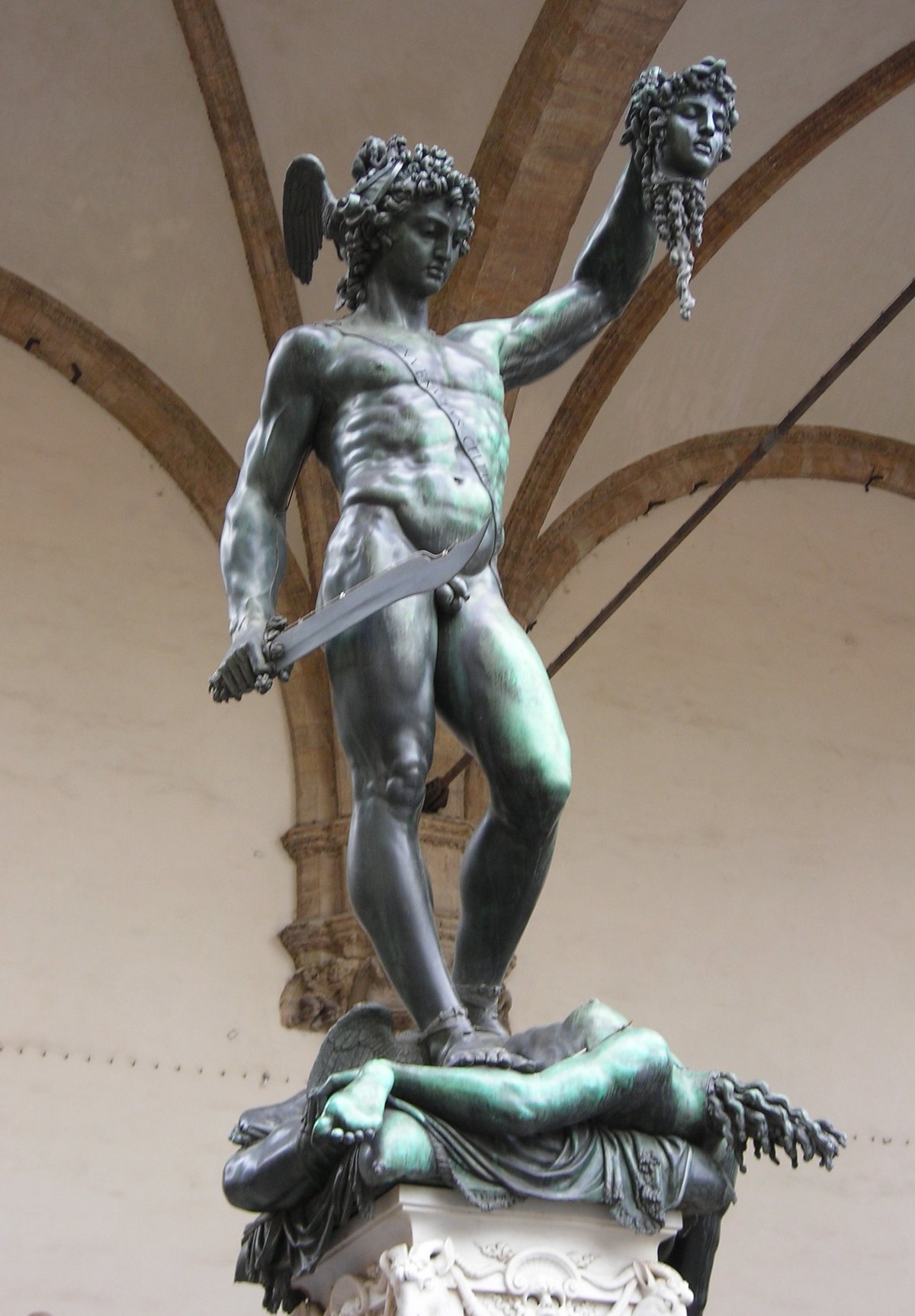
Comprehensive Guide to Visiting Perseus with the Head of Medusa, Florence, Italy
Publication Date: 17/08/2024
Introduction to Perseus with the Head of Medusa
Florence, a city steeped in Renaissance history and artistic splendor, boasts numerous iconic landmarks that draw millions of visitors each year. Among these masterpieces, the bronze sculpture ‘Perseus with the Head of Medusa’ by Benvenuto Cellini stands out as a quintessential symbol of artistic and political expression. Commissioned in 1545 by Cosimo I de’ Medici, the Grand Duke of Tuscany, this sculpture not only showcases Cellini’s technical prowess but also serves as a testament to the Medici family’s influence and power (Daily Art Magazine). Situated in the open-air gallery of Loggia dei Lanzi in Piazza della Signoria, the sculpture is accessible to the public free of charge, making it a must-see for anyone visiting Florence.
‘Perseus with the Head of Medusa’ is celebrated for its dynamic composition and intricate details, capturing the mythological hero Perseus in a moment of triumph. The sculpture’s creation was fraught with challenges, including a near-disastrous cooling of the bronze, which Cellini heroically overcame. This feat of casting the statue from a single piece of bronze highlights Cellini’s exceptional skill as a metalworker (Art in Context). Beyond its artistic brilliance, the sculpture carries rich mythological and political symbolism, representing Perseus’s divine victory over chaos and the Medici’s dominance over Florence (Visit Tuscany).
This comprehensive guide aims to provide an in-depth exploration of this iconic sculpture, covering its historical context, artistic significance, visitor information, and tips to enhance your experience. Whether you are an art enthusiast, a history buff, or a casual traveler, this guide will enrich your visit to ‘Perseus with the Head of Medusa’ and Florence.
Table of Contents
- [Introduction](#introductionintroduction)
- [History of ‘Perseus with the Head of Medusa’](#history-of-perseus-with-the-head-of-medusahistory-of-perseus-with-the-head-of-medusa)
- [Commission and Creation](#commission-and-creationcommission-and-creation)
- [Artistic and Technical Mastery](#artistic-and-technical-masteryartistic-and-technical-mastery)
- [Mythological Background](#mythological-backgroundmythological-background)
- [Political Symbolism](#political-symbolismpolitical-symbolism)
- [Visitor Information](#visitor-informationvisitor-information)
- [Tickets and Visiting Hours](#tickets-and-visiting-hourstickets-and-visiting-hours)
- [Nearby Attractions](#nearby-attractionsnearby-attractions)
- [Accessibility](#accessibilityaccessibility)
- [Special Events and Guided Tours](#special-events-and-guided-toursspecial-events-and-guided-tours)
- [Photographic Spots](#photographic-spotsphotographic-spots)
- [Benvenuto Cellini: The Artist](#benvenuto-cellini-the-artistbenvenuto-cellini-the-artist)
- [Legacy and Influence](#legacy-and-influencelegacy-and-influence)
- [Conclusion](#conclusionconclusion)
- [FAQ](#faqfaq)
- [Call to Action](#call-to-actioncall-to-action)
History of ‘Perseus with the Head of Medusa’
Commission and Creation
The bronze sculpture ‘Perseus with the Head of Medusa’ was commissioned by Cosimo I de’ Medici, Grand Duke of Tuscany, in 1545. Cosimo I, a significant patron of the arts, sought to solidify his power and influence through monumental works of art. The commission was awarded to Benvenuto Cellini, a renowned goldsmith and sculptor of the Renaissance period. The sculpture was completed between 1545 and 1554 and is currently displayed at the Loggia dei Lanzi in Florence, Italy (Daily Art Magazine).
Artistic and Technical Mastery
Cellini’s ‘Perseus with the Head of Medusa’ is celebrated for its dramatic depiction and technical brilliance. The sculpture portrays the Greek hero Perseus holding the severed head of Medusa in his left hand while brandishing a sword in his right. The dynamic composition, with Perseus’s swirling cloak and twisted pose, conveys a sense of movement and energy. The intricate details, such as the snakes on Medusa’s head and the feathers on Perseus’s helmet, showcase Cellini’s exceptional skill as a metalworker (World History Edu).
One of the most remarkable aspects of the sculpture is that it was cast from a single piece of bronze, a feat that was rarely attempted due to its complexity. Cellini faced significant challenges during the casting process, including a near-disastrous cooling of the bronze. According to legend, Cellini, despite being ill, sprang from his bed to manage the situation, ultimately saving the sculpture (Art in Context).
Mythological Background
The sculpture is rooted in the ancient Greek myth of Perseus and Medusa. Perseus, the son of Zeus and Danaë, was aided by gifts from the gods, including a polished shield from Athena, a sword from Hermes, and winged sandals. These divine tools enabled him to confront and behead Medusa, one of the three Gorgons whose gaze could turn people to stone. Cellini’s depiction captures the moment of triumph, with Perseus standing over Medusa’s decapitated body, blood gushing from the severed neck (Daily Art Magazine).
Political Symbolism
Beyond its artistic and mythological significance, ‘Perseus with the Head of Medusa’ carries deep political symbolism. The sculpture was intended to represent the power of Cosimo I de’ Medici, who had effectively ‘cut off the head’ of the Republic of Florence, symbolized by Medusa. The snakes emerging from Medusa’s body represent the discord and conflicts that plagued the Republic. Thus, the sculpture not only celebrates a mythological hero but also serves as a political statement of Medici dominance over Florence (Visit Tuscany).
Visitor Information
Tickets and Visiting Hours
‘Perseus with the Head of Medusa’ is located at the Loggia dei Lanzi in Piazza della Signoria, Florence. The sculpture is accessible to the public free of charge, as it is displayed in an open-air setting. The Loggia dei Lanzi is open 24 hours a day, allowing visitors to view the sculpture at any time, although daytime visits are recommended for better visibility and safety.
Nearby Attractions
Florence is rich with historical sites and artworks. Near the Loggia dei Lanzi, visitors can explore:
- Uffizi Gallery: A world-renowned art museum housing masterpieces by Botticelli, Michelangelo, and Leonardo da Vinci.
- Palazzo Vecchio: The town hall of Florence, offering tours of its historical rooms and tower.
- Ponte Vecchio: An iconic medieval bridge known for its shops and stunning views of the Arno River.
Accessibility
The Loggia dei Lanzi is wheelchair accessible, and the surrounding Piazza della Signoria is flat and easy to navigate. There are several benches and cafes nearby for those who need to rest or wish to enjoy the view.
Special Events and Guided Tours
Florence offers various guided tours that include ‘Perseus with the Head of Medusa’ as a highlight. These tours provide detailed historical and artistic context. Check local tour operators for schedules and pricing. Occasionally, the city hosts special events and exhibitions in Piazza della Signoria, enhancing the visitor experience.
Photographic Spots
For photography enthusiasts, the best times to capture ‘Perseus with the Head of Medusa’ are early morning or late afternoon when the natural light is softer. The sculpture can be photographed from multiple angles, with the backdrop of the Loggia dei Lanzi and the Piazza della Signoria adding to its dramatic effect.
Benvenuto Cellini: The Artist
Benvenuto Cellini (1500–1571) was a complex and controversial figure, known for his extraordinary talent and tumultuous life. Regarded as one of the finest goldsmiths of the Renaissance, Cellini aspired to be recognized alongside greats like Michelangelo. His life was marked by numerous legal troubles, including charges of sexual offenses, burglary, and even homicide. Despite these controversies, Cellini’s artistic achievements, particularly in metalwork, have cemented his legacy (Art in Context).
Legacy and Influence
‘Perseus with the Head of Medusa’ has left a lasting legacy in the art world. It is considered a masterpiece of Mannerist sculpture, a style characterized by elongated forms, exaggerated poses, and complex compositions. The sculpture’s influence extends beyond its immediate historical context, inspiring later artists and sculptors. For instance, Antonio Canova’s marble ‘Perseus with the Head of Medusa’ (1804–6) reflects a similar admiration for classical antiquity and showcases the enduring appeal of the mythological subject (Metropolitan Museum of Art).
Conclusion
The history of ‘Perseus with the Head of Medusa’ is a rich tapestry of artistic brilliance, mythological depth, and political symbolism. Commissioned by a powerful patron, created by a masterful artist, and celebrated for its technical and aesthetic achievements, the sculpture stands as a testament to the enduring power of art to convey complex narratives and assert cultural dominance. Visitors to Florence can experience this masterpiece firsthand, appreciating its historical context and the skill that brought it to life.
FAQ
Q: What are the visiting hours for ‘Perseus with the Head of Medusa’?
A: The sculpture is accessible 24 hours a day at the Loggia dei Lanzi in Florence.
Q: Do I need a ticket to see ‘Perseus with the Head of Medusa’?
A: No, the sculpture is displayed in an open-air setting and is free to the public.
Q: Where is ‘Perseus with the Head of Medusa’ located?
A: It is located at the Loggia dei Lanzi in Piazza della Signoria, Florence, Italy.
Q: Are there guided tours available?
A: Yes, various guided tours in Florence include ‘Perseus with the Head of Medusa’ as a highlight. Check with local tour operators for details.
Call to Action
Plan your visit to Florence today and immerse yourself in the rich history and art the city has to offer. Follow us on social media for more updates and tips on exploring Florence’s historical sites.
